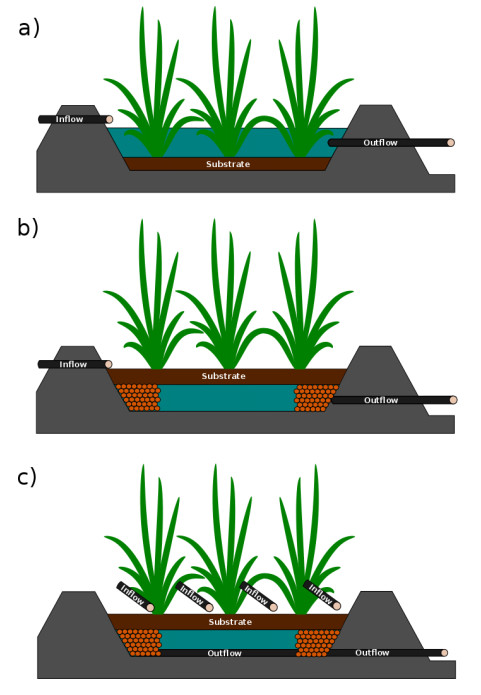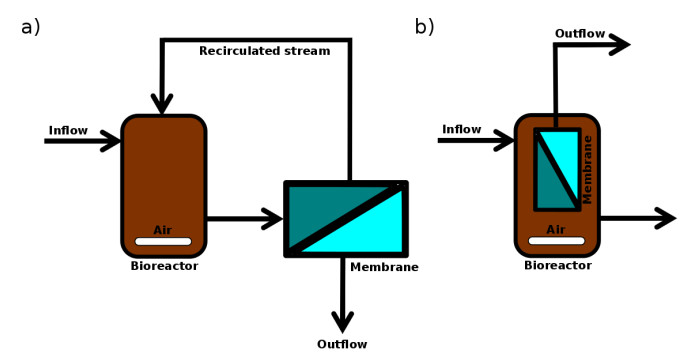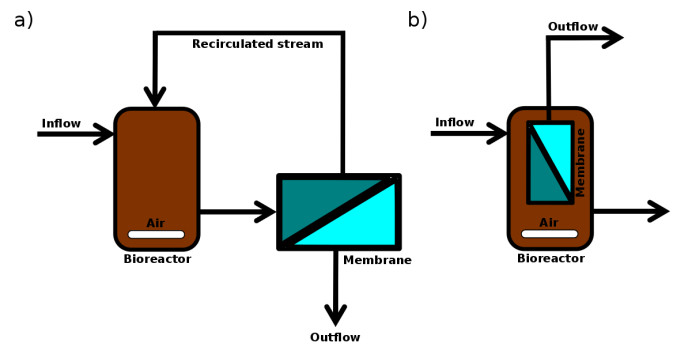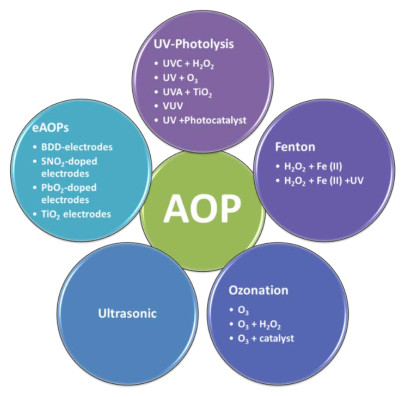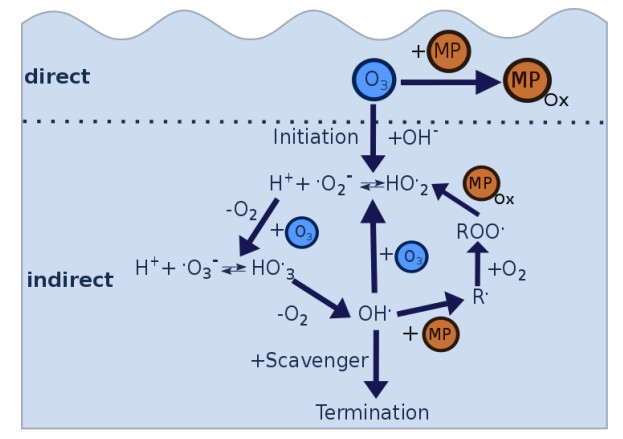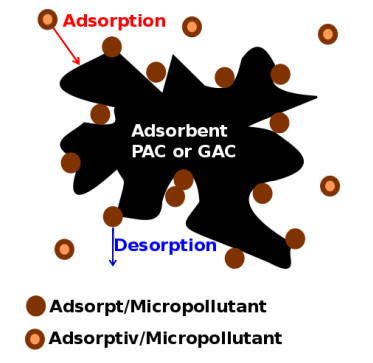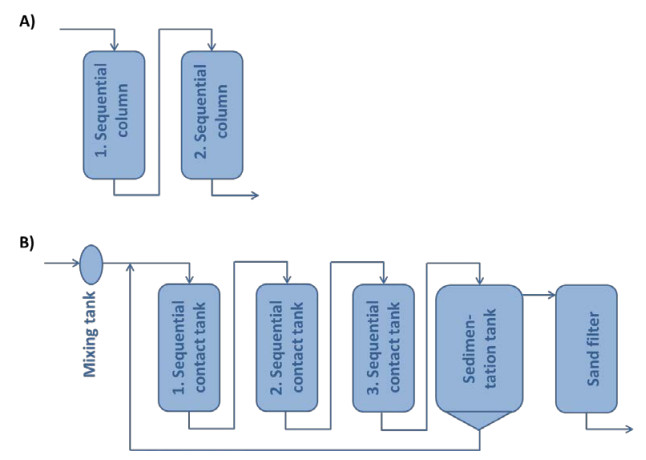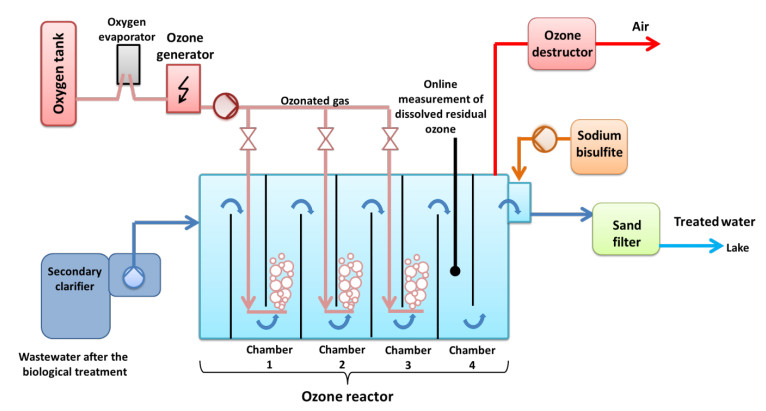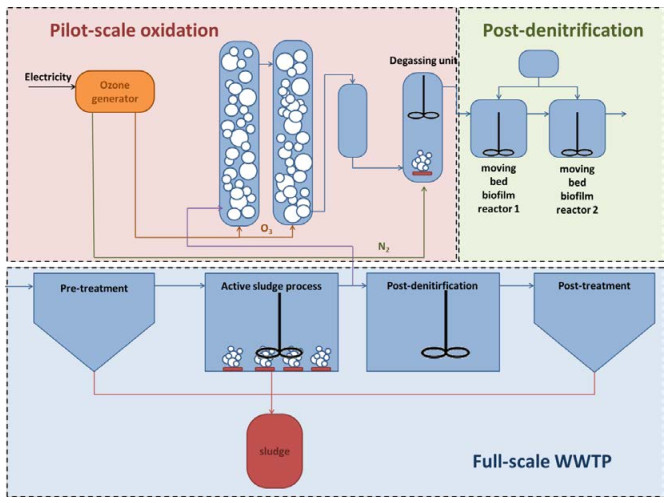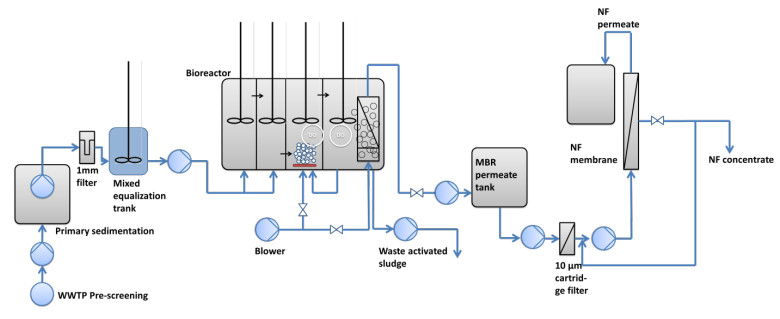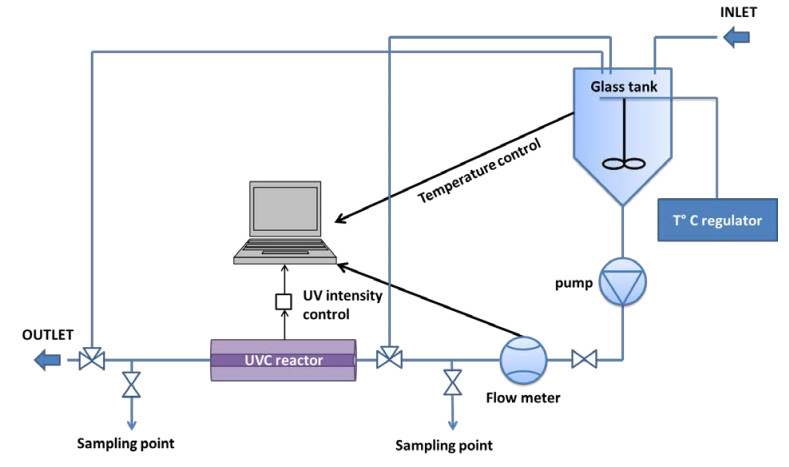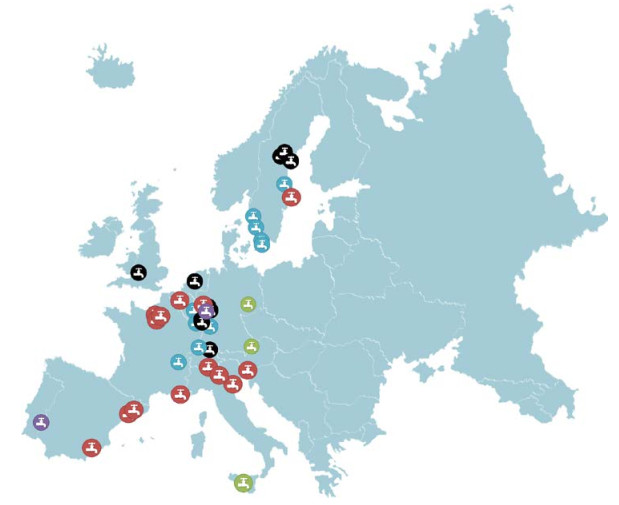Abbreviations: AOP: Advanced oxidation process; BDD: boron-doped diamond electrodes; CW: Constructed wetland; E1: Estrone; E2: 17-beta-estradiol; EE2: 17-alpha-Ethinylestradiol; EU: European Union; GAC: Granulated activated carbon; H-SSF: horizontal subsurface flow; MBR: membrane bioreactor; MP: micropollutant; MWCO: Molecular Weight Cut Off; PAC: Powdered activated carbon; PNEC: predicted no effect concentration; SF: Surface flow; TOC: Total organic carbon; UF: Ultrafiltration; USA: United States of America; UV: Ultra violet; V-SSF: vertical subsurface flow; WWTP: wastewater treatment plant
1.
Introduction
The extensive contamination of natural water resources and the aquatic environment with anthropogenic micropollutants (MPs) has come into the focus of public attention in recent years [1,2,3]. Such MPs comprise many different categories of substances like microparticles and molecular compounds [4,5]. Among the latter are biocides, which are toxic by nature, but also pharmaceutical drugs, which have now been used for decades in human and veterinary medicine [5]. Yet, these drugs or their metabolites reach the aquatic environment through excretion preceded by administration and through disposal [6,7]. Particular concern has been given to antibiotics in the environment leading to resistance and thus hindering the curing of diseases [8,9].
Currently, wastewater treatment plants (WWTPs) are not yet fully prepared for these new challenges. They have only insufficient possibilities at their disposal for the removal of MPs, such as pharmaceuticals or personal care products [10,11,12]. A variety of MPs is able to pass non-degraded and unhindered through the conventional purification stages of a WWTP. Further to a brief introduction to the design and functioning of a WWTP, this review presents various technological options for advanced wastewater treatment. These include advanced biological, physical and chemical treatment processes, which are presented according to their mode of operation, areas of application and realization. The realization outside and above the laboratory scale, i.e., in the form of pilot-scale systems, will receive special attention. Due to their importance and the many sources of ecological hazard, the review focuses on the elimination of pharmaceuticals from wastewater. The selectively chosen pharmaceuticals are found on the current European Union (EU) watchlist 2018/840 [13].
Further regulations of these trace substances have been introduced or extended during the last decade. One of them is the Decision 2018/840, which contains a watch list of critical substances for EU wide monitoring [13]. The first directive for the European water policy was published in 2000 whose main aim was to define a strategy to identify and prioritize high risk substances [14]. The first watch list was published in 2008 as the Directive 2008/105/EC, which comprised a set of 33 priority substances or groups of substances. The corresponding environmental quality standards were ratified [15]. The following Directive 2013/39/EU recommended 45 priority substances for monitoring in water systems to protect the aquatic compartments and the human health [16]. In 2015, the EU watchlist for monitoring was reduced to 17 organic compounds. The current list as of 2018 contains merely 15 organic trace substances [13,17]. Among these organic substances, there are 7 pharmaceutically used drugs, cf. Table 1.
Their presence in different kinds of water, especially surface, ground and drinking water was proved in several studies. A summary of these studies is shown in Table 2. Concentrations were found to depend on the global region. Values in Table 2 are reported as the highest concentrations observed in surveys, which were collected in a database of the Federal Environment Agency, Germany [18]. The listed values date from the period 2005 to 2018. For some compounds, such as ciprofloxacin and erythromycin in groundwater, concentrations found decreased towards the end of this period.
Yet, some of the values given seem rather high, such as groundwater concentration in Taiwan or in the US. Since the reports were evaluated reliable by authorities and experts, this might have been due to local over-application, unfavorable soil or weather conditions or avoidance of water treatment.
No consistent trend could be recognized which countries/regions or which type of water were particularly at risk. All pharmaceuticals on the EU watchlist were found in varying concentrations throughout the world in different waterbodies.
2.
WWTPs–today
While all WWTPs have common features, there are also important differences. Every WWTP needs to be adapted to local conditions. These include the number of connected inhabitants, the type of waste water, e.g., municipal or industrial, the type and quantity of freight, the average amount of waste water but also seasonal variations. These requirements result in different modifications of WWTPs. It is common practice to summarize their structure by the linked purification stages. The stages are following their sequence mechanical, biological and chemical purification. Each stage is realized in a different way. Rakes, clarifiers, sand traps or combinations thereof serve as the mechanical purification stage. The biological stage acts as the main transformation and degradation level of dissolved waste components. Unspecified bacteria, but usually highly adapted and specific to the local freight, form the heart of the WWTP. In addition to the secondary clarifier, the biological stage consists of the activated sludge tank and the nitrification and denitrification. At last, precipitation reactions, such as pH adjustment and flocculation, are mainly used in the chemical stage. The sludge produced in the purification stages is treated separate from the wastewater. The various purification stages are linked together in the WWTP. A simplified schematic structure of a typical conventional WWTP is shown in Figure 1.
The mechanical stage in the WWTP consists of a raking system, a sand trap and a primary clarifier. The biological stage is subdivided into anaerobic treatment, denitrification and aeration basins. The chemical stage-after the secondary purification–acts as clarification and includes only addition of a phosphate precipitant as final clarifier. The precipitated phosphate sediments and is removed with the sludge. Some WWTPs may add a sand filtration stage for removal. The clarified wastewater is eventually discharged into a natural body of water. The contamination of the aquatic environment with biologically or ecotoxicologically active substances, such as antibiotics, has become known through various studies [19,20,21]. The route of substances into the environment is not always easy to understand. Yet, some studies suggest the sewage system as a major entry path of pharmaceuticals into the aquatic environment [22]. Jelic et al. investigated 43 pharmaceuticals in the inflow, outflow and sludge of the sewage treatment plants in three sewage treatment plants in Catalonia during eight sampling campaigns [22]. These WWTPs only had a biological stage in addition to the mechanical cleaning. One WWTP had a third stage in form of a flocculation basin. Of 43 pharmaceuticals sought, 32 were found in the influent, 29 in the effluent and 21 in the sludge. Diclofenac, carbamazepine, clarithromycin and sulfamethazine were among the substances that were detected in the influent, effluent and sludge. The concentrations were reported in the range of ng/L in the influent and effluent and ng/g in the sludge. This study and many more showed the need for development of a fourth purification stage in WWTPs worldwide [23,24,25,26].
Table 3 provides an overview of concentrations of the relevant pharmaceuticals in effluents of WWTPs. The predicted no effect concentration (PNEC) is defined as the predicted concentration of a substance generally hazardous to the environment but has no environmental impact. As long as this concentration is not exceeded, no adverse environmental effects should occur. Due to the predictive nature of the value, reported PNEC may differ among studies.
According to the studies collected in the German Federal Environment Agency database, concentrations of pharmaceuticals found in conventional WWTPs exceeded the PNEC. It can hence be assumed that there is indeed a risk to the aquatic environment, to its species and to humans. There is a need for installation of a fourth purification stage in conventional WWTPs. Research and realization approaches for an extended cleaning stage will be presented in the following chapters.
3.
Technologies for fourth purification stages
Various technologies for potential use as a fourth purification stage in WWTPs have emerged from research and development [7,29,30,31]. These may be subdivided into biological, chemical and physical treatment processes. The processes can also be combined with each other in many ways. In the following paragraphs, the individual processes are presented with particular emphasis on their functionality and their efficacy to eliminate pharmaceuticals from wastewater.
3.1. Biological treatment processes
Among the biological purification processes, two approaches are of major importance: Constructed wetlands (CWs) and membrane bioreactors (MBRs) [29,32,33]. Wastewater processing systems of CW type are based on shallow ponds, beds or trenches containing floating or emerging rooted wetland vegetation [34,35]. The polluted water passes through the vegetation field and purification is achieved through gravity inducement. Depending on their construction, CWs are divided into three classes: Surface flow (SF), horizontal subsurface flow (H-SSF) and vertical subsurface flow (V-SSF) [36,37,38]. A schematic representation of the different classes of CWs is shown in Figure 2.
The simplest of the CW construction is the SF [39]. Wastewater is discharged into a plant-inhabited lake. It is cleaned through the plants. The purified water flows out of the lake. Dirt particles sediment–driven by gravity–to the bottom and into the substrate. Within the arrangement of H-SFF, the water is passed horizontally through a pipe onto the appropriate substrate, penetrates several layers and is thereby cleaned [36]. The purified water is discharged through a pipe at the borders of the CW. In the V-SFF, the wastewater is transferred vertically through several tubes into the CW and onto the substrate where it drains away through the substrate layers [36]. The purified water is finally recovered and collected on the bottom of the CW from where it is discharged.
Owing to the different methods, pharmaceuticals can be eliminated from the water. The efficiency of each procedure is shown in Table 4.
The best degradation efficiencies were achieved using the V-SSF-system. Seasonal differences in degradation efficiency were also reported. The removal or elimination of individual substances by means of CWs deteriorates significantly from summer to winter [40]. Complete elimination could not be achieved except for ciprofloxacin while removal efficiencies seemed promising in particular for estrogens. Considering the overall efficiency for the watchlist pharmaceuticals, the H-SSF approach performed best. In addition, CW realization is an easy, relatively inexpensive and efficient method with respect to the purity of the effluent.
Another biological treatment process makes use of MBR. The technique could be described as ultrafiltration [45,46]. A variety of membranes are available. Differences in the processes originate from the membrane materials used and the pore sizes of the membranes [47,48]. Separation takes place by size exclusion or by different solution and diffusion behavior. Therefore, pore and solution diffusion membranes are distinguished. While the latter allow mass transfer by diffusion, pore membranes control the mass flow through pore and contaminant size. To classify membranes, the minimum molecular size, that is still retained, is usually indicated as the Molecular Weight Cut Off (MWCO) [49]. With decreasing pore size of the membranes, thus with decreasing MWCO, the transmembrane pressure where the processes must be operated increases. This defines the pressure difference between inlet and permeate side [49]. An overview of the physical processes with the corresponding MWCO, membrane types and transmembrane pressures is given in Table 5.
Two different installations in combination with the MBR are used: Sidestream and submerged MBR, see Figure 2 [45,50,51].
In the sidestream MBR installation, the water to be purified is flowed into a bioreactor where it is aerated for aerobic decomposition of the substances. The water is further passed through an externally installed membrane compartment, where additional cleaning takes place. Pollutants are recirculated back into the bioreactor. Purified water leaves the system as effluent.
In contrast to the sidestream processes, the membrane purification step in a submerged MBR is integrated into the bioreactor such that purified water is obtained directly from the reactor. The efficiencies of the two reactor types for the purification process are shown in Table 6.
Nearly independent from the pharmaceuticals, the sidestream MBR proved the better approach for purification. For the most part, cleaning efficiencies of over 90% were achieved. On comparison to the CWs, the sidestream MBR showed higher removal efficiencies. Its design is less space demanding since it is of much smaller dimensions.
Nevertheless, some draw-backs are associated with MBRs. Pore sizes of the membrane can change over time due to the addition of substances, a process referred to as membrane fouling [51,56,57]. The effect can be sufficiently strong that microfiltration becomes ultrafiltration [56]. Especially during the filtration of water, microorganisms preferably attach to the membrane, as nutrients are carried directly and continuously to them. When growth of bacteria on the membrane persevers, complete clogging or blocking of the membrane occurs. This is called biofouling [58]As another undesired aspect, molecular entities are not retained even in case of ultrafiltration.
3.2. Chemical treatment processes
A promising way to eliminate anthropogenic MPs is the use of Advanced Oxidation Processes (AOPs) [19,59,60,61,62]. These include the irradiation of solutes with UV light, which can be carried out with the addition of hydrogen peroxide (H2O2) or titanium dioxide (TiO2), catalyzing and accelerating the elimination. Other AOPs comprise ozonation, sonolysis, photoelectrocatalytic reactions or photo-Fenton processes.
Defining element of AOPs is the generation of hydroxyl radicals. These radicals have the highest oxidation potential, i.e., 2.80 V, second only to fluorine, 3.03 V [59,60,63]. Hydroxyl radicals can be generated by various methods during AOPs, see Figure 3.
Ideally, complete mineralization of the MPs according to Eq 1 occurs, which reduces or eliminates toxicity [59,64,65,66].
with X:NO3, SO4, Cl, Br, I
When these compounds do not contain halides, their degradation can be described according to Eq 2 [67].
The formation of products more toxic than the initial pharmaceutical has been discussed as disadvantage of AOPs using photo-irradiation [68,69]. Thus, it is important to carry out the irradiation until complete mineralization of the pharmaceutical or at least to the point where no toxic or reactive species persists.
During sonolysis, hydroxyl radicals are generated from water and may recombine to hydrogen peroxide. Firstly, ultrasonic waves consist of expansion and compression cycles. During expansion, these waves possess sufficient intensity to form bubbles within liquids. Secondly, these bubbles continuously absorb energy from the expansion and compressions cycles. The bubbles grow to a critical size and collapse. During collapsing, a high local temperature of about 5000 K occurs together with a high pressure of about 1000 atm [70,71]. Under these conditions, water molecules dissociate. The formation of OH radicals is frequency dependent with a maximum formation rate at sonic frequencies between 200–350 kHz [71]. Addition of iron induces the Fenton process [72]. Serna-Galvis et al. studied different systems. Three macrolide compounds were removed from WWTP effluent on average of 65% after 90 minutes of treatment [72]. When sonolysis, UV irradiation, oxalic acid and Fenton reagents were combined, a reduction of 72% was achieved within 90 min.
The intensely researched AOPs comprise ozonation and UV light irradiation, which are discussed in more detail in this chapter. With the help of vacuum UV radiation, i.e., in the range of 100–200 nm, it is possible to dissociate water into OH radicals, see Eq 3 [59,73,74,75,76].
The oxygen content in solution may also influence a reaction under UV irradiation [67,77]. In the presence of oxygen, the hydrogen radical, which is formed together with the hydroxyl radical from water at 185 nm irradiation, can react with oxygen to form the peroxyl radical, see Eq 4 [75].
Depending on the UV responsiveness of a substance, compounds can be degraded using UV irradiation [62,78]. The degradation can be further accelerated using H2O2 or TiO2, see Eqs 5 and 6.
In case of UV irradiation, sufficient radiation intensity, many times rather high intensity, is a prerequisite for successful photo-induced degradation. Many substances can be degraded provided the penetration depth or the radiation into the solution and the irradiation time are sufficient. The degradation can also be accelerated by using homogeneous or heterogeneous catalysts. Up-scaling or piloting of AOPs is often hindered or impeded by the complex wastewater matrix absorbing large fractions of the radiation, rendering the catalysts inefficient through adsorption or scavenging the hydroxyl radicals.
Ozone is an unstable, reactive oxidant and must be produced on-site in a high-voltage alternating field due to its poor storage stability. The ozone thus produced is introduced into the wastewater stream after the biological purification stage and oxidizes substances present directly or indirectly, i.e., it generates hydroxyl radicals through reaction with water molecules. Owing to the reactivity of ozone, the occurring reactions are rather unspecific. Hence, a wide variety of products can arise. An overview of the direct and indirect ozone reaction pathways is given in Figure 4 [79].
The ozone dosage is essential for the degradation efficiency [80]. In principle, any organic substance can be degraded completely if the dosage of ozone is sufficient. Yet, the wastewater matrix always containing oxidizable material of biological, biochemical or non-anthropogenic chemical origin acts as buffer for direct and indirect ozonation, requiring thus an even higher ozone dose than necessary for pharmaceutical micropollutants.
Processes using as oxidant ozone in combination with H2O2 and UV irradiation are known to accelerate the degradation of pharmaceuticals [59,60,81,82].
As examples, azithromycin and erythromycin at a concentration of 20 mg/L were degraded within 10 min by UVC irradiation [62,78]. The degradation rate was found accelerated in the presence of H2O2 [78]. Studies by Tong et al. showed a slower degradation rate [83]. Azithromycin was irradiated during several hours but complete degradation could still not be achieved within one day. Only the use of artificial water and the addition of nitrate and humic acid led to complete degradation [83]. This was due to using different radiation sources, in case of the latter study more similar to sunlight.
Similar results were reported for EE2. Frontistis et al. compared the use of sources radiating exclusively either in the UVA or the UVC region with solar irradiation [84]. Within 60 min, complete degradation of 100 µg/L EE2 could not be achieved. Best results were observed from UVC irradiation, where the degradation efficiency amounted to 47%. Using 10 mg/L H2O2 complete removal of EE2 was obtained within 15 min [84]. Ma et al. achieved complete degradation of EE2 in 120 min in the presence of 15 mg/L H2O2 [85]. Similar results were reported for E2. In case of E1 complete degradation was found within 60 min in the absence of H2O2 [85]. The use of sources emitting different ranges and intensities yields different degradation efficiencies. The same applies for the type of water, e.g., pure model water, hospital wastewater, influent or effluent from WWTPs. Mostly the degradation of the active substance is slower in effluents of WWTP than in ultrapure water [67,86]. Several studies report the photon flux of the radiation source, which may allow for better comparison between studies [73]. Yet, others do not. Another critical point is that many studies deal with higher concentration of the active substance in their experiments than the concentrations in surface water found. Most often, the degradation efficiency refers to the main drug substance, leaving potentially ecotoxicological degradants. Only studies conducting total organic carbon (TOC) determination or at least dissolved organic carbon (DOC) follow the efficiency up to mineralization. Degradation or transformation products may best be identified by high-resolution liquid chromatography coupled to high-resolution mass spectrometry [62,78,86,87,88]. Bobu et al. investigated degradation rates of ciprofloxacin using ozone, UV irradiation, H2O2 and Fe(Ⅱ) individually and in combination [89]. The least TOC, hence best compound removal was achieved by combined UV irradiation, ozonation, hydrogen peroxide and Fe (II) treatment at a success rate of 93%. It could be shown that the different combinations of AOPs provide different degrees of degradation, requiring still further research in this topic. It should be noted that not only the degradation products resulting from these processes might be more toxic than the initial drug substance but ozone itself is also hazardous. That property renders the safety measures for use in WWTPs more costly and challenging.
3.3. Physical treatment processes
Physical processes use absorbents for purification, for example active carbon, carbon nanotubes or graphene-based nanomaterials [1,90,91,92]. The processes are based on the principle of adsorption, e.g., attachment to a surface-active solid such as resins or activated carbon. The adsorption is favored by the large specific internal surface of the adsorbent. Two mechanisms of sorption are distinguished: Chemisorption and physisorption. Chemisorption refers to an irreversible chemical reaction forming chemical bonding between adsorbent and adsorptive, while physisorption is based on van der Waals forces and therefore mostly reversible. In the liquid phase, the physisorption predominates and thus enables the regeneration of the adsorbent. Schematically, the processes during adsorption are shown in Figure 5.
One of the adsorbents the most used for wastewater purification is activated carbon [5,93]. Different types of activated carbons are available. Granulated activated carbon (GAC) and powdered activated carbon (PAC) are particularly suitable for use in WWTPs due to the large specific internal surface area and their ability to adsorb organic substances [5]. GAC and PAC differ in grain size. GAC has grain sizes up to 4 mm, while PAC has grain sizes up to 0.5 mm [94]. Hence, specific applications result. PAC is usually added to the wastewater stream before the secondary clarifier. Adsorption takes place during residence in the secondary clarifier and during subsequent filtration. The filtered PAC can be reused until a maximum load is reached. In contrast, GAC is commonly used as fixed-bed filters. Fix-bed filters are vertically arranged columns filled with absorbent as stationary phase. These are flowed through in upflow or downflow mode. To prevent a breakthrough of the adsorptive, the beds must be regenerated regularly. This is achieved by backwashing the adsorbent filter with a suitable washing solution. For the timely detection of an imminent breakthrough of the fixed-bed filters, the filtrate needs to be constantly monitored or regularly analyzed. The use of either PAC or GAC leads to removal efficiencies as listed in Table 7.
Complete removal by PAC was achieved for antibiotics [96]. Almost half of the content of estrogenic substances could be eliminated, which in principle is insufficient for water purification due to the high activity of these compounds. The efficiency could not be improved by use of GAC. For ciprofloxacin, erythromycin and azithromycin, very good elimination rates were found.
4.
Pilot plants with additional purification stage
Growing in size and numbers, investigative wastewater treatment studies are transferred from the laboratory scale to the scale of pilot plants, while WWTPs are equipped with an additional purification stage [99]. The use of the purification methods presented above are implemented fully or in part as pilot-scale installations in WWTPs. In particular, some WWTPs have been equipped with activated carbon, ozonation, MBR and/or UV irradiation as advanced purification stage. Several studies have taken into account economic factors and compared the procedures with each other. Here, Kå relid et al. constructed and compared two pilot plants for wastewater treatment using PAC and GAC [100]. The GAC pilot plant consisted of two tanks with a volume of approximately 60 L. The GAC filling height amounted to 1 m and was operated in a downflow configuration. The PAC pilot plant consisted of a mixing tank where the wastewater stream was mixed with PAC and subsequently homogenized. The installation was extended by three contact tanks with a volume of about 100 L. A sedimentation tank with a volume of about 180 L followed. A sand filtration tank concluded the assembly. It has a volume of about 66 L. A scheme of the pilot plant is given in Figure 6.
For monitoring purposes, samples were taken at each tank's inlet and outlet. These were examined for various pharmaceuticals and their removability from the water. Apart from other pharmaceuticals, clarithromycin was investigated with respect to the removal efficiency. The elimination efficiencies were as high as 97% for PAC and 96% for GAC [100]. The use of PAC and GAC in pilot scale plants significantly increased the degree of elimination of clarithromycin and also other pharmaceuticals. When the results of the PAC pilot plant are compared to those of the GAC testing plant, similar successes were observed. Yet, elimination rates differed significantly, depending on the substance monitored. For example, carbamazepine was significantly better removed from wastewater using GAC in the pilot plant than using PAC. Other pharmaceuticals, such as diltiazem, were better eliminated from the water using PAC [100]. It must be noted that activated carbons show a great heterogeneity in affinity towards the variety of micropullutants depending on the specific manufacturing method [101]. Hence, in a meta-analysis of 44 pilot plant studies testing granular activated carbon treatment single adsorbers operating time was found to differ by 2500% due to the heterogeneity of these studies [102]. Besides activated carbon type these are DOC and process parameters as backwashing cycles. Overall, the use of the PAC pilot plant would remove over 18 of 22 pharmaceuticals by more than 95%. The GAC pilot plant achieved this efficiency for 9 out of 22 substances [100].
Margot et al. investigated a pilot plant using PAC filtration and an additional ultrafiltration stage especially for the elimination of pharmaceuticals from wastewater, see Figure 7 [103].
This fourth stage pilot plant was operated receiving water from the WWTP in Lausanne, Switzerland, for further cleaning. The pilot plant consisted of three contact reactors. Fresh PAC was suspended in already purified water, i.e., recirculated after purification, in the mixing vessel. The slurry was added to the water in the biological stage of the WWTP. The combined fraction was transferred into the contact reactors. In a vessel equipped with ultrafiltration membranes, PAC was separated from the water. One part of the carbon was recycled while the surplus was incinerated. By use of the PAC pilot plant the concentration of pharmaceuticals could be reduced by an average of 70% [103,104]. Margot et al. went on to use an ozonation pilot plant consisting of an ozonation reactor, ozone generator and sand filter, see Figure 8.
The ozone was introduced via reversed flow, divided into four chambers. A sand filter acted as last stage before the effluents entering Lake Geneva. Excess gaseous ozone was catalytically destroyed in the exhaust air. The ozonation pilot plant was found to have a higher efficiency in the elimination of individual substances, while the PAC pilot plant was able to remove a wider range of substances [103,104]. A comparison between PAC-UF and Ozone removal efficiency is given in Table 8.
Both methods achieved the same degradation or removal efficiencies. Yet, complete degradation or elimination of all substances could not be achieved. An alternative approach was suggested where the ozonation step was interposed between the first aeration tank and the subsequent denitrification as described by Baresel et al., see Figure 9 [105].
Yet, the high oxygen concentration after ozonation as well as potential deleterious effects on the denitrification stage and on the environment persisted. Common pharmaceuticals, such as metoprolol, diclofenac and carbamazepine, were effectively eliminated from the water as a function of ozone concentration by the pilot plant. At an ozone concentration of 0.5 to 0.8 O3/mg dissolved organic carbon, the pharmaceuticals were reduced to a safe concentration level. Based on this data, a conversion of the WWTP in Linköping, Sweden, has been planned since 2015 [105].
Mamo et al. expanded their WWTP by an optimized MBR in form of nanofiltration. The second purification stage was revised as well. The resulting pilot plant will be installed in WWTPs in Giron, Spain. Aim of the study by Mamo et al. was the reduction of pharmaceuticals that can form harmful products in a disinfecting step. These disinfection by-products include N-nitrosodimethylamine, which can be formed from azithromycin, clarithromycin or erythromycin [106]. The schematic structure of the MBR with nanofiltration according to Mamo et al. is visualized in Figure 10.
The macrolides, azithromycin, clarithromycin and erythromycin were reduced by about 62 to 100% using the MBR [106].
Hofman-Caris et al. and Cédat et al. used various AOPs to reduce estrogens and pharmaceuticals in wastewater [107,108]. The construction of the pilot-plant from Cédat et al. is shown in Figure 11.
Without H2O2 addition, a maximum degradation of 70% was observed for the three estrogens. The higher the H2O2 concentration, the more efficient proved the degradation of E1, E2 and EE2. Here, 100% reduction was achieved by addition of 90 mg/L H2O2 [108].
Hofman-Caris et al. compared the AOP combinations UV/H2O2, UV/O3 and O3/H2O2. The focus in this study was on the degradation of known pharmaceuticals. The different pharmaceuticals were degraded differently depending on the AOPs. The best results were attained by UV/O3 combination. Anhydroerythromycin A, which arises during degradation of erythromycin, was found degradable through all AOPs, except for the combination of O3 and H2O2 [107]. Thus, various combinations of AOPs are possible, the effectiveness differs from substance to substance.
According to Margot et al., PAC and ozonation WWTPs may be run at comparable efficiencies and costs if the PAC system is equipped with a sand filter instead of an ultrafiltration system [104]. In general, the system used must be adapted to the wastewater which is to be treated. Further studies show the economy and efficiency of ozonation plants, but the required ozone concentration cannot be predicted and has to be determined in pilot experiments [109]. It will also vary with freight and season. Another problem with additional purification stages is an increased need for personnel. In addition to the need for additional staff, the necessary qualifications of the personnel employed increase depending on the technology used.
When for example handling UV radiation, hydrogen peroxide or ozone, extended safety measures must be taken and personnel trained accordingly. Furthermore, all types of MPs need to be taken into account when choosing the additional purification stage, since further to pharmaceuticals, microplastics and nanoparticles carry a risk for the aquatic environment as well as for humans.
5.
Conclusion
The growing number of anthropogenic MPs in the aquatic environment occurs–among other pathways-through the sewage systems and thus WWTPs. Currently, only few WWTPs are able to remove organic MPs satisfactorily from wastewater. Chronically harmful substances not only enter the aquatic environment and negatively affect living organisms, but may also return eventually and occur in drinking water passing through water treatment plants. Yet, the problem does not lie only with current WWTPs but also with drinking water treatment plants, which often only filter or disinfect the water. As a secondary effect of the disinfection steps, harmful by-products such as N-nitrosodimethylamine may be generated from pharmaceuticals in the water treatment plants [106]. Besides the transformation products associated with the water treatment, human or animal metabolites of drug substances may also come into research focus, since their occurrence was observed in raw hospital wastewater that will eventually enter WWTPs [110].
The increasing number of scientific or technological publications on wastewater treatment and the growing popular interest demonstrate that the problem has been identified and taken serious. The number of pilot plants being tested in WWTPs also indicates a growing public awareness.
Several practical applications have advanced from the researched purification methods to the pilot plant level, such that the best technological choice for large-scale treatment plants seems within reach. However, the pilot plants are currently concentrated in very few areas over Europe. A geographical overview of pilot plants, not all of which were presented in this review, are shown in Figure 12.
As can be recognized, such pilot plants are installed mainly in Western European countries. The highest concentration is actually found in Germany, Switzerland and Sweden. No pilot plants were reported from eastern European countries.
While a variety of chemical processes work well on laboratory scale, scaling-up to pilot plant or even WWTP level causes severe technical and safety issues that need to be addressed. Cost efficiency also needs to be considered, giving often relatively less rigorous approaches such as CW purification an advantage. Nevertheless, feasibility and efficacy of PAC and ozonation combined with filtration techniques have already been proven successful.
In the future, it will be necessary–and planning is under way in many countries-to equip more WWTPs with additional purification stages and to design new WWTPs accordingly. To this purpose, further research in the field of pilot plants needs to and will be carried out in order to evaluate the available and applicable technologies and to eventually protect our aquatic environment and ourselves.
Acknowledgements
MV, KHJ and MJ gratefully acknowledge the financial support from EFRE.NRW, project Enz4Water (EFRE-0801523).
Conflict of interest
All authors declare no conflicts of interest in this paper.
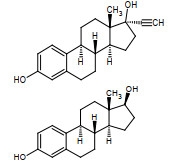
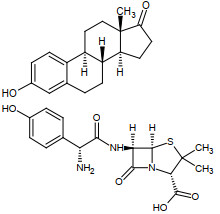
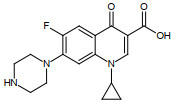
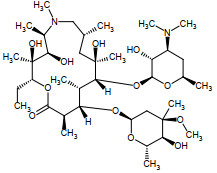
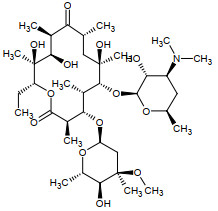
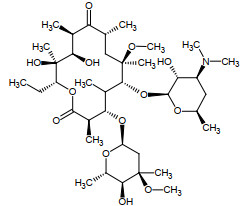









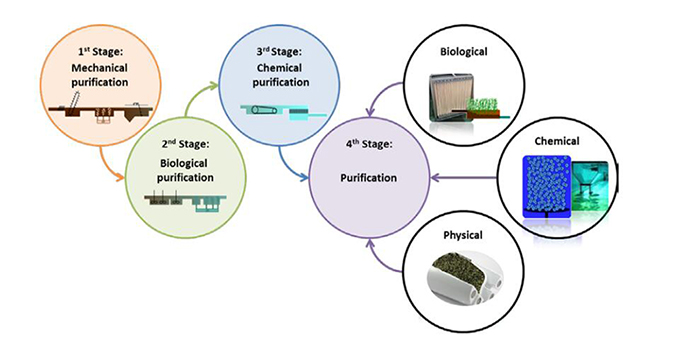
 DownLoad:
DownLoad:
